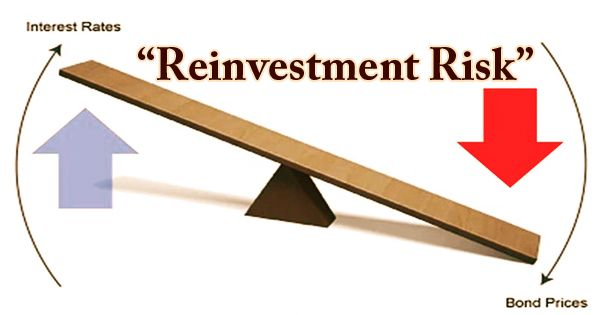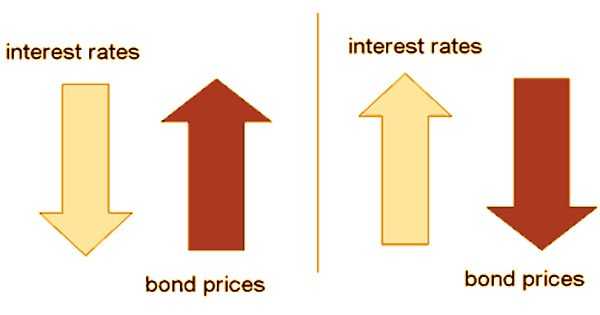Do You Know: What Is Reinvestment Risk?
Feb 05, 2024 By Triston Martin
Introduction
The risk of being forced to reinvest income streams (such as coupon payments or the final return of principle) into lower-yielding securities. To reinvest one's profits at a lower rate than the current rate is known as reinvestment risk. This risk is commonly linked with bond investing but is not limited to that asset class. The risk of loss increases, for example, if you buy a bond whose return rates are falling over time and then reinvest the proceeds in the same bond when they mature.
Reinvestment Risk: An Understanding
The risk of reinvestment occurs when an investor worries that the returns on a new asset will be lower than those on the original investment. There is a possibility that the investor's rate of return may decline, and they will be unable to reinvest cash flows at a pace comparable to that rate. To illustrate, suppose an individual decides to invest $100,000 in a 10-year Treasury note (T-note) bearing a 6% interest rate. The annual return on investment (ROI) sought by the investor is $6,000. After the initial year, however, the interest rate drops to 4%. If the investor reinvested the $6,000 they received, they would receive $240 per year instead of $360 per year on the new bond.
In addition, if interest rates rise after the note is issued and it is sold before it matures, the investor could lose some or all of the initial investment. In addition to bonds and other fixed-income investments, reinvestment risk can impact dividend-paying stocks. To a greater extent, reinvestment risk affects bonds that can be called. This is because holders of callable bonds tend to cash in their holdings when interest rates fall. Upon redemption, the bondholder will receive par value, and the issuer will have another opportunity to borrow funds at a lower interest rate. Investors who are prepared to reinvest will earn a lower interest rate.

How Investment Risk Is Handled
Suppose an investor constructs a bond portfolio when yields are at 5%. The investor commits $100,000 to a 5-year Treasury note with an annual interest rate of 5%. Let's assume that rates on this particular bond class will fall 2% from their current level during the next five years. At maturity, the bondholder would get $100,000 plus all accrued interest (five percent per year). There is a problem in that if the investor were to buy another bond of the same class, they would no longer get interest payments of 5% but would instead have to reinvest their money at the lower market rates. The previous note provided annual revenues of $5,000, but this new one would only offer yearly payments of $2,000.
Reinvestment Risk Management
Reinvestment risk can be mitigated through the purchase of non-callable securities. Since Z-bonds do not have a regular interest payment schedule, they are also available for sale. With less frequent access to cash and a corresponding reduction in the frequency with which it must be reinvestment, longer-term securities may be a viable alternative. A bond ladder is a portfolio of fixed-income assets with varying maturity dates used to mitigate reinvestment risk. It's possible that bonds with higher interest rates at maturity could compensate for those with lower yields.
A similar method can be applied to Certificates of Deposit (CDs). Investors can mitigate the threat of reinvestment by owning bonds of varying maturities and using interest rate derivatives to protect their portfolios. Since having a fund manager might help reduce reinvestment risk, some investors consider placing money into actively managed bond funds. Reinvestment risk continues to be a factor because bond rates increase in tandem with the market.
What Individual Investors Should Know About Reinvestment Risk
It is not uncommon for investors to try to make up for lost interest income by purchasing high-yield bonds, as they did in large numbers after the 2008 financial market crisis when interest rates were meagre. Commonly referred to as "junk bonds"). This strategy is understandable, but its efficacy is questionable because garbage bonds fail at exceptionally high rates when the economy isn't operating well, which often correlates with a low-interest rate environment.

Conclusion
There is no requirement that you invest bond proceeds in more bonds. If such money were placed in assets unaffected by falling interest rates, the risk of reinvestment might be mitigated. With the help of monetary gurus, it is possible to increase your investment portfolio. Reinvestment rate risk refers to the potential loss in value resulting from reinvesting future cash flows at a lower rate of return because of declining interest rates. Fixed-income assets, especially callable bonds, are often associated with reinvestment rate risk. Likewise, this is particularly crucial for shorter-term bonds and investors. Investors can mitigate their exposure to the reinvestment rate risk by allocating capital to assets with a longer time horizon.








